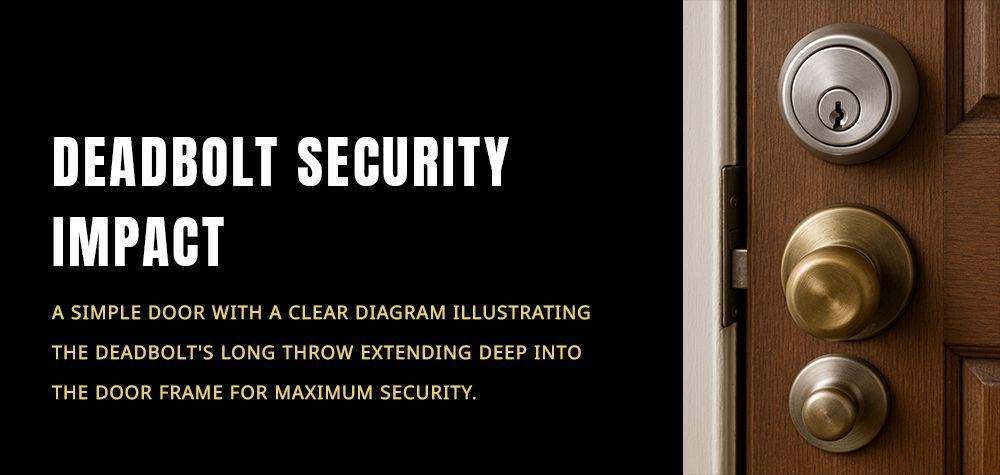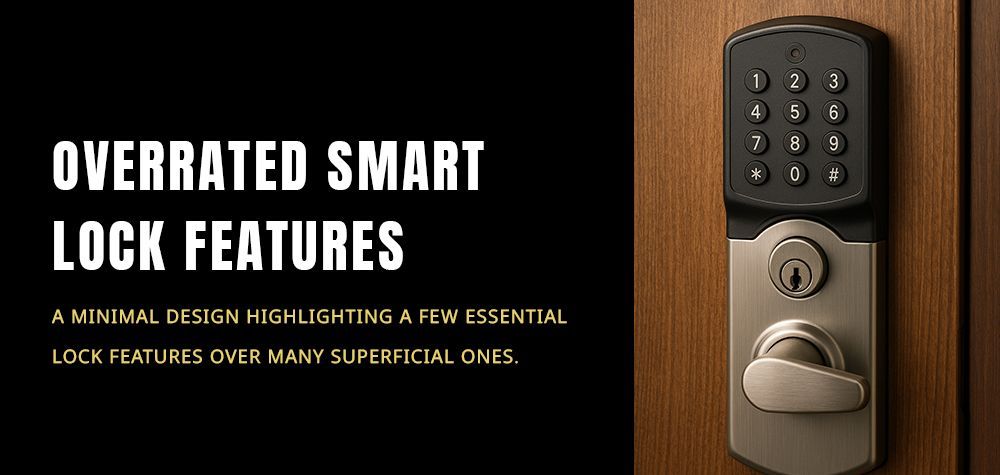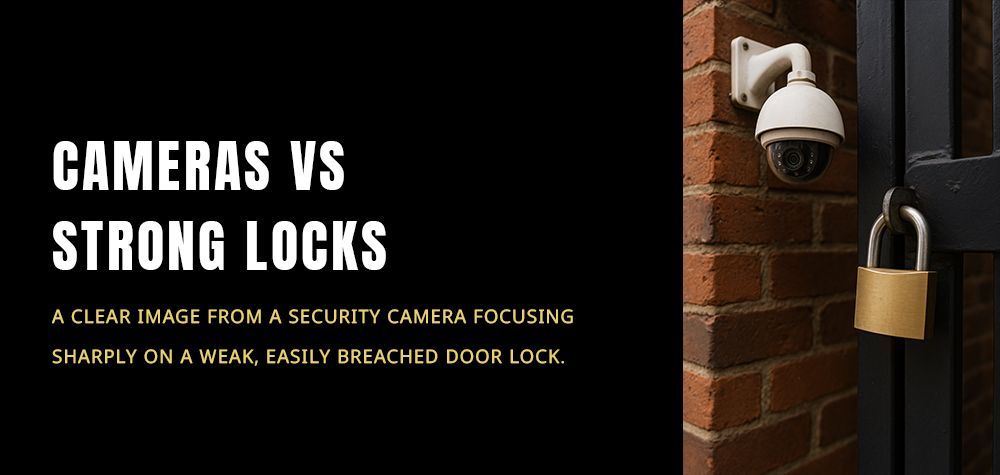Are fingerprint door locks safe for families?
In an era where security is more digital than ever, fingerprint door locks are quickly gaining popularity among families looking for smarter, safer ways to protect their homes. The idea of using your fingerprint instead of fumbling with keys seems almost futuristic — and undeniably convenient. But before you rush out to install one on your front door, it’s important to pause and ask: Are fingerprint door locks truly safe for families?
Security isn’t just about technology — it’s about trust, ease, and peace of mind. In this guide, we’ll walk through everything you need to know about fingerprint locks: how they work, the potential vulnerabilities, the smart ways to use them, and whether they really are the right choice for your household. For professional help, reach out to us!
Let’s dig in.
Are Chain Locks and Padlocks Still Effective in 2025?
How Fingerprint Door Locks Work: Simplicity Meets Sophistication
At their core, fingerprint door locks use biometric technology to verify a person's identity based on their unique fingerprint patterns. When you place your finger on the scanner, the lock reads the ridges and valleys of your fingerprint and matches it against pre-stored data. If it matches, the door unlocks in a fraction of a second.
Modern fingerprint locks often pair biometric recognition with backup options like keypad codes, RFID cards, or even smartphone apps. This layering ensures that even if the biometric system fails temporarily — say, your hands are wet or dirty — you’re not left stranded outside.
It sounds seamless because, in many cases, it is. But no system, no matter how advanced, is 100% perfect.
Potential Causes of Fingerprint Lock Failures
Despite the impressive technology, fingerprint locks can encounter issues that might cause inconvenience — or worse, security vulnerabilities.
The most common problem is reading errors. Things like wet, greasy, injured, or worn-out fingerprints can interfere with the sensor's ability to read your finger properly. Children, especially toddlers, may have underdeveloped fingerprint patterns that some scanners find difficult to recognize consistently.
Another issue arises from power failure. Many fingerprint locks are battery-operated. If the battery dies and you haven’t set up an alternative entry method, you might find yourself locked out.
There’s also hardware malfunction to consider. Exposure to extreme weather — heavy rain, snow, or intense heat — can degrade sensors over time, particularly if the lock isn’t designed for outdoor use.
And while rare, there’s the possibility of security breaches. No biometric system is entirely immune to hacking attempts, particularly with low-cost models that might cut corners on encryption standards.
When you’re choosing a lock meant to protect your family, understanding these potential pitfalls is key.
Step-by-Step Solutions If Things Go Wrong
If you encounter trouble with your fingerprint lock, don’t panic — most issues have straightforward fixes.
First, if the fingerprint isn’t being recognized, try cleaning both the sensor and your finger. Dirt, oil, or moisture often interfere with reading accuracy more than you might expect.
If cleaning doesn’t work, use the backup access method. Enter the PIN code, swipe your RFID card, or unlock it via the mobile app if those options were set up. This is why it’s critical to configure alternative access methods during installation — never rely solely on fingerprints.
If the lock’s battery is dead, most high-quality models provide emergency charging options like USB ports. Keep a portable charger handy, just in case.
And if you suspect the lock has been physically damaged or tampered with, it’s time to call in a professional locksmith with expertise in electronic and biometric locks. A skilled expert can diagnose, repair, or replace faulty systems without compromising your home's security.
Remember: Preparedness is what separates a minor hiccup from a major headache.
Risks Involved: Understanding the Real Concerns
Like any security system, fingerprint locks come with a few genuine risks that families should be aware of before making the switch.
The biggest concern is false acceptance and false rejection. Although modern locks boast incredibly low error rates, there is still a small possibility that the scanner could mistakenly accept an unauthorized fingerprint or reject an authorized one.
Another potential risk is data security. In cheaper models, stored fingerprint data may not be encrypted adequately, opening up the possibility of hacking. If someone gains access to the lock's internal storage or cloud database (if connected), it could be compromised.
Additionally, physical bypassing — tampering with the hardware itself — remains a theoretical risk, though it’s typically harder to pull off compared to traditional key lock-picking.
The key takeaway? Quality matters enormously. Not all fingerprint locks are built the same, and cheaper is often not safer when it comes to protecting your family.
Expert Recommendations: What Families Should Look For
If you're considering installing a fingerprint lock at home, experts offer some clear, actionable advice to maximize security and peace of mind.
First, choose a reputable brand known for robust encryption standards and weatherproof design. Brands like Ultraloq, Samsung, and August consistently rank high among security professionals.
Next, install dual authentication if possible. Some smart locks allow you to require both a fingerprint and a PIN code for access. This double layer drastically reduces the chances of unauthorized entry.
Also, update the firmware regularly. If your lock is Wi-Fi or Bluetooth enabled, manufacturers often release updates to patch vulnerabilities. Stay on top of those updates just as you would with your smartphone or computer.
When installing, position the lock thoughtfully. Ensure that it’s shielded from harsh weather if it’s an outdoor door. Some families even install small protective hoods above the lock to shield it from rain or intense sunlight.
Finally, train all family members on backup methods. Children, especially, should know how to enter a PIN code or use an emergency key if the fingerprint system doesn’t recognize them.
The right preparation makes all the difference between a secure smart home and a vulnerable one.
Preventive Measures to Enhance Safety
Preventing fingerprint lock issues is all about proactive care.
Clean the sensor periodically with a soft cloth to prevent buildup of dust and oils that can interfere with performance. Inspect the lock regularly for signs of wear or weather damage, and replace batteries before they get dangerously low.
Teach younger children proper usage — like keeping fingers clean and pressing firmly but gently on the sensor. Simple habits like these can drastically extend the life and reliability of your lock.
And if you notice consistent glitches or failure to recognize fingerprints, don’t ignore it. Early servicing can prevent major breakdowns and ensure your home remains securely protected.
Think of your fingerprint lock as an investment in peace of mind — and like any investment, a little maintenance goes a long way.
Conclusion: Are Fingerprint Door Locks Safe for Families?
The answer is: yes, fingerprint door locks can be very safe for families — when used wisely.
While no system is absolutely foolproof, a well-chosen, high-quality fingerprint lock provides an excellent combination of security, convenience, and modern functionality. The key lies in understanding how they work, being prepared for occasional hiccups, choosing the right model, and maintaining it properly over time.
If you want the convenience of keyless entry and the sophistication of biometric technology without sacrificing safety, fingerprint locks are definitely worth considering. Just make sure you do your homework and install one that meets the real security needs of your family.
Call Us Any Time!






